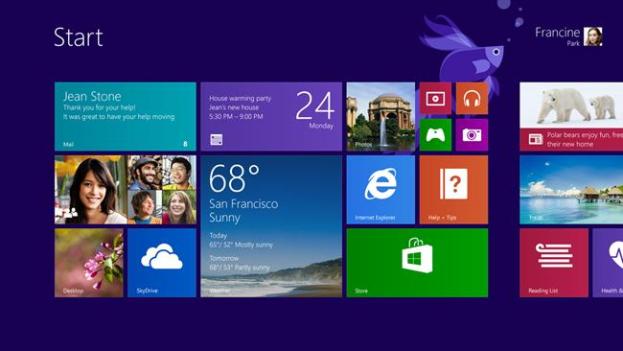
Excitement is building around the Windows 8.1 update that is expected to right some of the wrongs of Windows 8 – such as bringing back the Start button. But home users aren’t the only ones looking toward to 8.1 for a new and improved operating system. Business users and IT departments thinking of migrating to the new OS are also looking at the enhancements the new update will bring to them. At the TechEd Conference in New Orleans, Microsoft gave enterprise users a taste of what they can expect in Windows 8.1. Let’s face it: for Microsoft’s nascent OS to succeed longterm, it’s going to need enterprise users to adopt it and make it their own.
Many of Microsoft’s enhancements are focused on mobile productivity and bring-your-own-device (BYOD) features and policies. Mobile users with NFC-capable Windows 8.1 devices will be able to print wirelessly to existing printers once they add an NFC tag to the printer. If NFC is too fancy, Wi-Fi direct printing, which creates a peer-to-peer network between a device and printer, will also be available. Native Miracast wireless display support is also included, allowing users to project a presentation through a Bluetooth or NFC connection.
Devices connected to the Internet via mobile broadband will be able to share the connection wealth with peers and their devices thanks to personal Wi-Fi hotspot support. Anyone who’s been stuck on a work trip with the one guy who has broadband-enabled laptop while everyone else remains disconnected from the outside world will surely appreciate this new feature.
Another pet peeve that Microsoft has rectified is that clicking on a program that requires a VPN connection to work properly will automatically prompt you to sign in with one click. We’ve spent lots of time stuck with spinning wheels and Task Manager shut downs, so a quick reminder to actually connect to the VPN first is welcome.
Among the BYOD features the company is adding, Workplace Join allows for better control over a device’s access to a workplace network. Instead of an all-or-nothing affair, Windows 8.1 gives IT departments the ability to control what parts of a company’s network may be accessed by a particular device. There are also enhancements so that employees’ work folders on their device will sync with their folders on the company network automatically. Lastly, IT departments will be able to wipe just the relevant parts of an employee’s device, leaving the employee’s personal data alone and eliminating the need to completely wipe a device.
With Microsoft’s Build conference a few weeks away, we’re sure to hear more details about the upcoming Windows 8 update.

